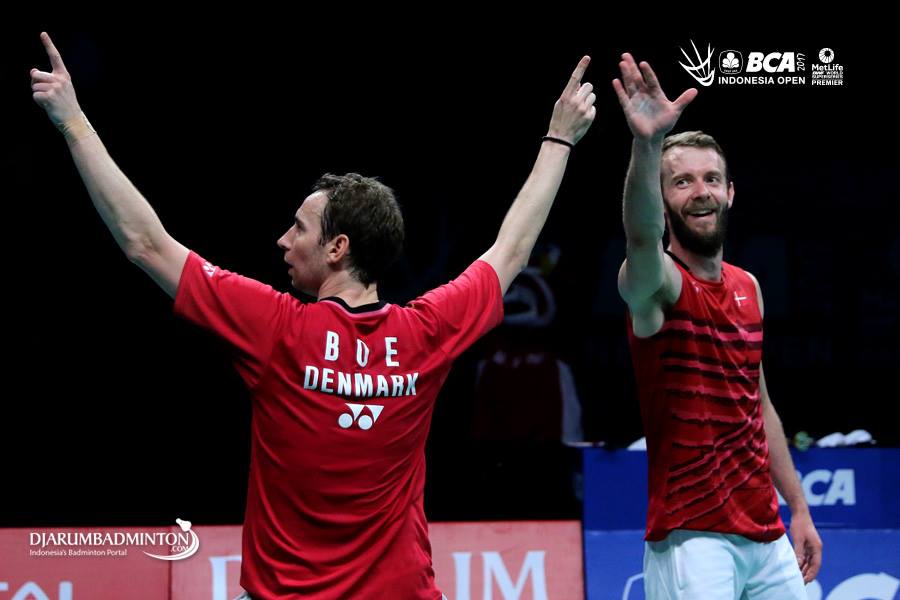![]()
Mar 17, 2021.
Written by Ulrik Juul Christensen.
https://www.forbes.com/sites/ulrikjuulchristensen/2021/03/17/how-denmark-produced-a-badminton-champion—and-what-that-teaches-business/

This week, Denmark’s Viktor Axelsen will take to the court to defend his championship title in the All England Open — the Wimbledon of badminton. For the 27-year-old Axelsen, his rise to the top seems to defy logic: at six-foot-four he was considered too tall, and his country of less than 6 million people is far too small compared to China, Japan, Indonesia, and India, which dominate the sport.
The reasons behind his success — how he trains and his mindful combination of deliberate practice and having fun — not only explain how he has earned both a World Championship and an Olympic medal; they also hold surprising lessons for business leaders.
The first lesson started when he was a young player, whose growth spurts could have been a detriment to his ambitions. “There were no good badminton players at the time who were as tall as I am now,” Axelsen said when I spoke to him on the phone from Birmingham before the All England Open. “But I had a really good coach who told me to build on my strengths and not drown in that limitation.”

Axelsen honed his practice in a way that built competence and infused fun. The results are five key insights to develop in badminton — or in business.
● Cluster Theory in action. Denmark’s total population wouldn’t even make it on the list of China’s top-ten biggest cities. Therefore, it lacks the population pool that has allowed China to systematically find and develop talented athletes. Yet Denmark not only produced Axelsen, but also Anders Antonsen who won the 2020 season finale (over Axelsen) and many other world-class players over the past several decades. Axelsen credits the environment, specifically Denmark’s club system that allows athletes to interact with and compete against a variety of players, including those who are far more skilled. This is Porter’s Cluster Theory in action: the geographical concentration that turned Silicon Valley into a nest for incubating startups — and has helped developed badminton players who benefit from proximity. For business leaders, it’s a reminder of the importance of close connections for everything from observing best practices to exchanging ideas. Access to experts and other high achievers also helps build a growth mindset that’s crucial to continuous improvement.
● Repeating quality, not quantity. China reportedly has 100 million badminton players and has brought home 41 Olympic medals – Denmark has 8. Practice sessions for Chinese competitors are 5 to 7 hours a day, or longer. “I would not have fared well in that system,” admits Axelsen, who is fluent in Mandarin and has been given a Chinese name by his teacher — An Sai Long, meaning calm competitive dragon. “I am more of a fan of the Danish system, where intensity and quality are the most important parts of practice,” he said. This aligns with the concept of “deliberate practice,” coined by the late K. Anders Ericsson, which incorporates a feedback loop into practice to address weaknesses, close gaps, and improve over time. For business leaders, the takeaway is the realization that a sheer volume of attempts is not necessary for achieving one success; rather it’s about input and feedback that give every attempt a higher probability.
● Get in the “flow.” Top performers in any field often describe achieving a state of mind in which they are completely absorbed in what they are doing. This is “flow,” a positive psychology term that describes both total focus and a high level of enjoyment. “When I practice, I do get into the flow. I am so focused, at some point it will become automated,” Axelsen said. In any endeavor, when people love what they do — a key factor in entrepreneurship — performance becomes optimized. Engagement is everything.
● Never forget to play. Axelsen practices hard, but he always tries to have fun. For example, he devotes time in his twice-a-day practices to develop his trick shots. “They’re fun and make me feel inspired,” he said. “But I also know that at some point during a match, I might be able to pull a trick shot.” This has become his innovation lab for finding creative solutions and producing positive outcomes. In some professions, fun at work may seem to be a paradox. Yet, for CEOs to ICU physicians, finding joy in what they do, continuing experimentation, and maintaining a sense of “professional play” can increase engagement, improve performance, and inspire others.
● The soul of commitment. “What I realized from a young age is I have given my soul to this sport,” Axelsen said. Passion may ignite early, but the challenge is keeping that spark alive — for the athlete who faces the inevitable losses and injuries; the entrepreneur who must persevere through the rejection of early ideas; and the corporate leader who suddenly must revamp business models and strategies in the face of disruptive competitors. Commitment that’s soul deep develops resilience, what researcher and author Angela Duckworth calls “grit.” From badminton to business, it is the key to reaching full potential.

Ulrik Juul Christensen
I am a medical doctor by training, but I have spent the last 25 years developing education technology from interventional reading for K-4 students, over adaptive and personalized learning–from retail staff to medical doctors to medical patient simulators. My particular interests are pragmatic approaches to making blended learning designs work in real life and at scale, as well as intelligent technologies to get computers closer to better facilitate learning when learners cannot get help from teachers, tutors or peers
https://www.forbes.com/sites/ulrikjuulchristensen/2021/03/17/how-denmark-produced-a-badminton-champion—and-what-that-teaches-business/
 BadmintonBladet flest nyheder om badminton
BadmintonBladet flest nyheder om badminton























